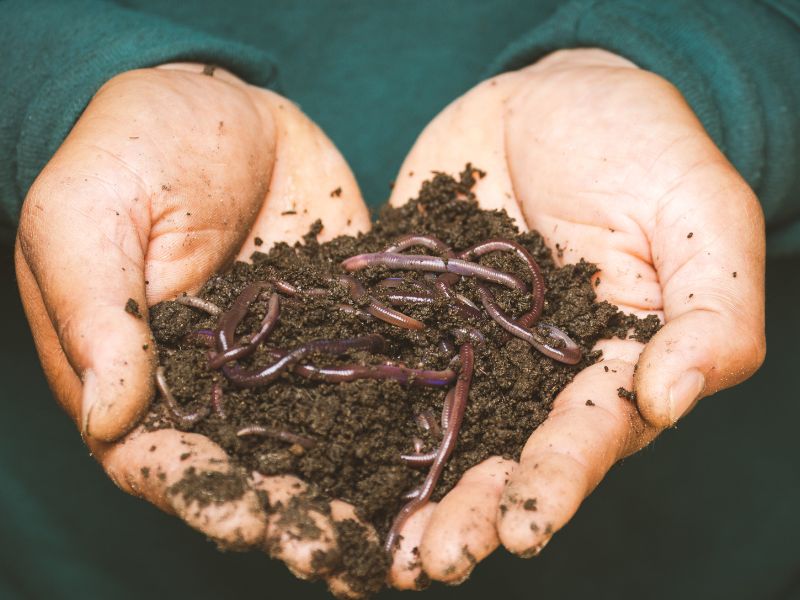Understanding the Benefits of Red Wiggler Composting: How This Reliable Method Transforms Organic Waste Into Nutrient-Rich Soil Changes
Red Wiggler composting, utilizing the species Eisenia fetida, offers a compelling approach to organic waste monitoring, converting kitchen scraps and backyard debris right into useful soil modifications. This technique not just improves soil fertility yet also addresses pushing environmental issues, including landfill waste decrease and greenhouse gas emissions.
What Are Red Wigglers?
Red wigglers, medically called Eisenia fetida, are a species of earthworm that play an essential role in vermicomposting systems. These worms are identified by their reddish-brown color, fractional bodies, and a distinct capacity to thrive in organic-rich settings, making them optimal for composting applications - Red Wiggler Composting. Unlike their garden-dwelling equivalents, red wigglers choose to live in the upper layers of soil, where rotting matter is bountiful
Commonly determining in between 3 to 4 inches in size, red wigglers have a high reproductive price, enabling them to increase rapidly under ideal conditions. They have an unique digestion system that allows them to refine natural waste effectively, transforming it into nutrient-rich castings, which are very advantageous for plant development.
Their tolerance to differing wetness degrees and temperature varies further improves their energy in vermicomposting setups, making them a preferred selection among composting lovers. In addition, red wigglers are cardiovascular microorganisms, which requires a well-aerated composting atmosphere, making certain efficient decay. Recognizing the biological qualities and actions of red wigglers is essential for enhancing their use in lasting waste monitoring methods.

Advantages of Vermicomposting
Utilizing the power of vermicomposting deals a wide range of ecological and farming benefits. First of all, it dramatically reduces organic waste in landfills, thus lessening methane exhausts, a powerful greenhouse gas. By drawing away food scraps and lawn waste to vermicomposting, we support a more sustainable waste management system.
Additionally, vermicomposting enhances soil health. The castings produced by red wigglers are rich in important nutrients, microbes, and enzymes, improving dirt framework and fertility. This nutrient-rich modification advertises robust plant growth and increases water retention, reducing the need for chemical plant foods.
In addition, vermicomposting fosters biodiversity in the dirt environment. The introduction of advantageous microorganisms from worm castings help in illness reductions and nutrient biking, producing a healthier environment for plants.
Financially, vermicomposting minimizes the expenses related to chemical inputs and waste disposal. Farmers and garden enthusiasts can cultivate high-quality fruit and vegetables at reduced expenses, adding to food protection and sustainability.
Exactly How to Start Composting
Beginning a composting venture can be a straightforward and fulfilling procedure. This will certainly help preserve a balanced temperature, vital for the composting procedure.
Collect natural materials such as cooking area scraps, backyard waste, and shredded paper. Go for a balanced mix of 'green' products, high in nitrogen (e.g., fruit scraps, coffee grounds), and 'brownish' products, rich in carbon (e.g., dried out leaves, cardboard) A proportion of roughly 2:1 eco-friendly to brownish materials is excellent.
Begin layering your products, guaranteeing ample air circulation by turning the stack routinely. This advertises aerobic decay, speeding up and lowering odors up the procedure. Display dampness levels; try this site the compost ought to seem like a moist sponge yet not extremely wet.
Nutrient Profile of Vermicompost
Composting, especially with red wigglers, produces a nutrient-rich item referred to as vermicompost. This natural modification is identified by its high concentration of important nutrients, making it a vital source for horticulture and farming. Vermicompost commonly contains raised degrees of macronutrients such as potassium, nitrogen, and phosphorus, which are critical for plant development. In addition, it gives trace elements like calcium, iron, and magnesium, fostering robust plant growth and boosting soil health and wellness.
The microbial task existing in vermicompost even more enriches its account, introducing advantageous bacteria and fungis that promote vitamins and mineral schedule and uptake in plants. This biological component help in reducing plant illness and improving dirt framework, causing enhanced water retention and oygenation.

Ecological Impact of Composting
The ecological impact of composting, especially via making use of red wigglers, is extensive and diverse. This approach considerably decreases the quantity of natural waste sent to garbage dumps, which subsequently reduces greenhouse gas exhausts, particularly methane-- a potent factor to environment change. By diverting organic materials from land fills, red wiggler composting not just helps alleviate ecological degradation but likewise advertises lasting waste management practices.

Additionally, composting contributes to carbon sequestration, as the process captures carbon dioxide from the environment and stores it in the soil. This natural process aids in combating climate change while enriching the dirt - Red Wiggler Composting. On the whole, red wiggler composting offers a sensible, eco-friendly solution for waste management and have a peek at these guys environmental sustainability, promoting much healthier ecological communities and an extra lasting future
Final Thought
Finally, Red Wiggler composting works as an effective method for transforming natural waste right into valuable dirt changes. The process not only enhances dirt fertility and framework however likewise reduces environmental concerns related to waste disposal. By utilizing Eisenia fetida, this form of vermicomposting adds to enhanced biodiversity and supports sustainable farming methods. Ultimately, Red Wiggler composting plays a crucial duty in advertising healthier communities and resolving the difficulties of climate adjustment.
Red Wiggler composting, utilizing the types Eisenia fetida, offers a compelling strategy to organic waste administration, transforming kitchen area scraps and backyard debris into beneficial soil changes. Unlike their garden-dwelling equivalents, red wigglers choose to populate the top layers of soil, where rotting issue is abundant.
The castings generated by red wigglers are abundant in vital nutrients, germs, and enzymes, improving soil structure and fertility. The nutrient-rich results of red wiggler activity enhance dirt framework, increase water retention, and advertise biodiversity within the dirt community.In final thought, Red Wiggler composting offers as an effective technique for transforming natural waste into beneficial soil changes.
Comments on “Why Red Wiggler Composting is the most effective Selection for Eco-Friendly Horticulture”